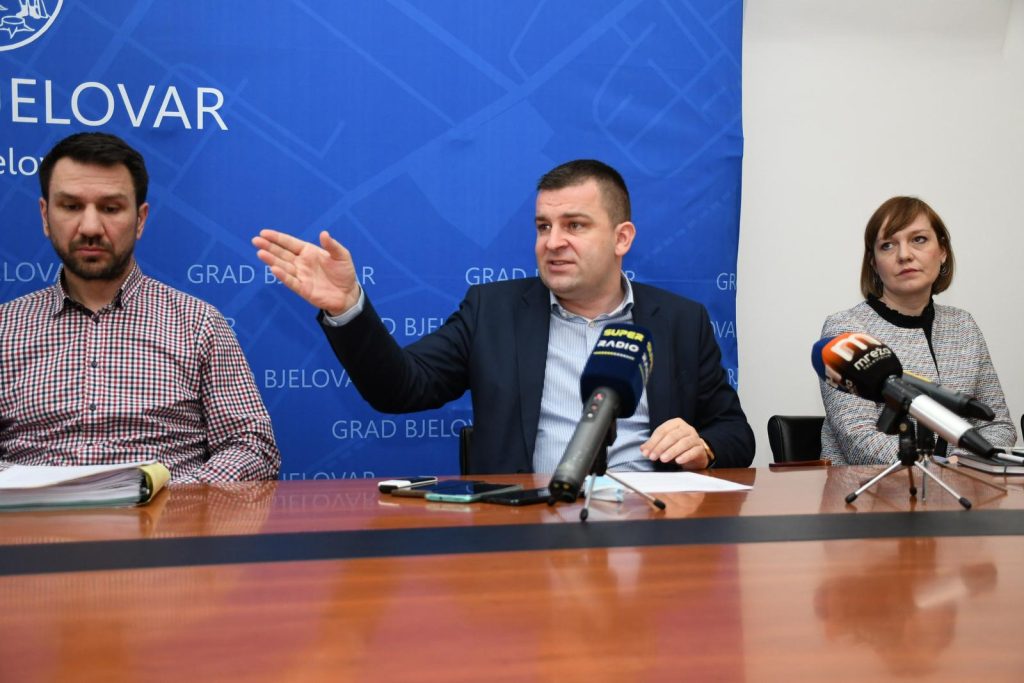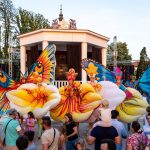As Darko Bicak/Poslovni Dnevnik writes, as stated, the continental Croatian town of Bjelovar is already the national centre of the use of geothermal sources, and the only geothermal power plant for the production of electricity (GE Velika Ciglena) is located on its territory. This town will raise its leadership position in this segment to the European level in the coming period with the construction of the Bjelovar communal geothermal power plant.
Although electricity can be produced from hot water, this technology is much more useful for thermal energy, especially for public hot water systems, in which Bjelovar will also lead the way. Bjelovar Mayor Dario Hrebak announced that this town will embark on just such a project – the construction of the Bjelovar communal geothermal power plant that will supply heat to the majority of public and apartment buildings across the area.
“The documentation regarding the boreholes made by INA over the past 60 years, done in search of gas and oil, shows that our entire area, including the centre of Bjelovar itself, is very suitable for the application of geothermal technology. We estimated that the green area next to the stadium is the location where we’ll start the feasibility study and the investment in the first communal power plant of this kind in all of Croatia. It’s an ideal position because within a small radius of just 800 metres, there are a large number of public buildings and large energy consumers – three high schools with a sports hall, a primary school with a hall, the police station, a retirement home, student dorms, and, in particular, a hospital that needs very large amount of heat to function. In addition, there are two districts with multi-apartment buildings, and it’s clear what the benefits of this project would be”, Hrebak explained, adding that the necessary infrastructure is relatively small because everything is already located nearby.
If this project is implemented according to plan, they expect to be able to build two to four more such thermal power plants in Bjelovar over the coming years and thus cover the entire area with hot water pipes where the water temperature is higher than 70 degrees Celsius.
They don’t want to speculate about the specific deadlines and costs of the so-called “Operation Stadium” because the project has only just started, that is, a feasibility study is underway, which should be completed by the end of the year. However, Hrebak is more than sure that it will show profitability and expects that it should all have a similar process to the deadlines and dimensions of their already advanced Veliko Korenovo project on the outskirts of the town, next to the Bjelovar Fair. This was a large investment of 3.5 million euros that was developed over two years.
He estimates that Bjelovar has a total potential of around 30 MW of installed energy capacity in geothermal technology. Given that the town has a maximum, or peak, consumption of 40 MW of electricity, it’s clear that with only its hot water sources, Bjelovar could become a very elegant, long-term and inexpensive energy-neutral environment. So far, there is only one operational geothermal power plant in all of Croatia, Velika Ciglena near Bjelovar with a capacity of 10 MW, and there are about ten more such projects in some stage of development.
Despite the ownership struggles of Dragan Jurilj and his Turkish partners from MB Holding, GE Velika Ciglena has shown that such projects can be realised in this country despite issues and that energy can be produced. Although they also plan to produce electricity in Bjelovar, currently their primary focus is being placed on heat. The construction of a well for the use of geothermal energy in the settlement of Veliko Korenovo will also soon begin. It is a project whose goal is to increase the production of energy from renewable sources, reduce CO2 emissions and increase security of supply. The total value of the project stands at 3.47 million euros, of which 1.3 million euros are grants.
A quick return on investment
Hrebak pointed out that the return on the investment poured into the Bjelovar communal geothermal power plant is planned in just a few years after exploitation, and it will indirectly create a large number of jobs. He added that a public procurement for the contractor is planned to be announced some time this month, and drilling is expected to begin in the middle of next year. Drilling will take a little more than one month to carry out, and it is expected that they’ll find a source of water with a temperature of around 70°C, which would be used to heat the greenhouses, the Bjelovar Fair, and the Veliko Korenovo business zone. The mayor noted that it could be the first real “district heating” project in all of Croatia.
The project was co-financed by the “Energy and Climate Change” Programme of the Ministry of Regional Development and European Union (EU) Funds, the Principality of Liechtenstein, Norway and Iceland as donor countries and the programme partner of the Hrvoje Pozar Energy Institute.
Along with the Bjelovar communal geothermal power plant, they also plan to build a Thermal Riviera, or a spa, on the basis of geothermal sources. The plan, as explained by Mayor Hrebak, is to submit the Spa and Stadium project to the tenders of the National Recovery and Resilience Plan in February next year, from which the majority of the investment would be financed.
For more, make sure to check out our news section.











